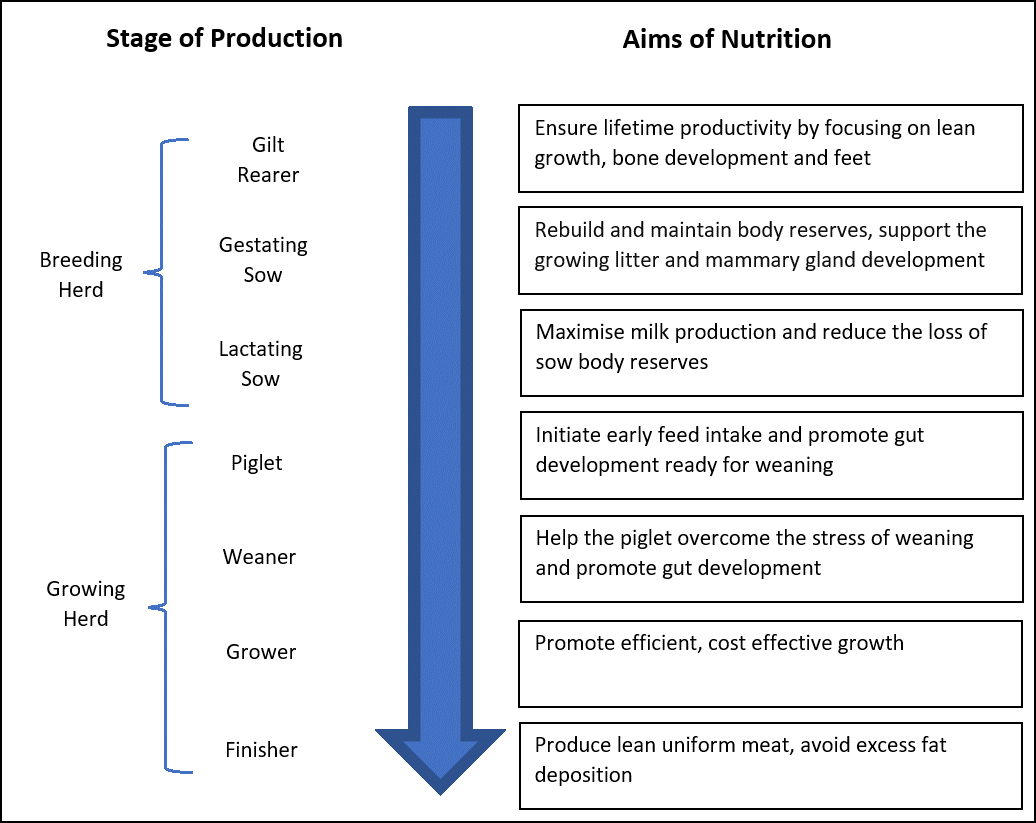- Home
- Knowledge library
- Nutrition guidance for pigs
Nutrition guidance for pigs
Learn about the correct nutrition for pigs and how their requirements change with each stage of production.
Overview of pig nutrition
Pigs require six main categories of nutrition:
- Water
- Carbohydrates
- Fat
- Protein (amino acids)
- Minerals
- Vitamins
While it is not a nutrient, pigs require energy, which they obtain from carbohydrates and fat. Pigs also require a precise combination of amino acids, which they acquire from protein. Pigs need these nutrients for maintenance, growth, reproduction, lactation and other functions.
Pigs’ requirements for these nutritional components are influenced by many factors, including:
- body weight
- reproductive state
- health
- genetics
- the environment
For example, pigs’ requirement for dietary lysine (an essential amino acid, the first limiting) decreases as they age as a result of increasing feed intake; weaner pigs require more lysine, while finisher pigs require considerably less. Similarly, a gestating sow has different nutritional requirements to a lactating sow feeding piglets. Figure 1 gives an overview of the main aims of nutrition at each stage of production.
Pig physiology
Pig physiology also changes with age. Their digestive systems do not reach full maturity until a few weeks after weaning. In addition, the population of microorganisms within the gut develops with age, meaning that pigs’ ability to digest certain raw materials will vary.
Suckling and newly weaned piglets require highly digestible raw materials, such as milk products and animal proteins, because their guts are less able to cope with vegetable proteins and complex starch. Additives, such as prebiotics, probiotics, acids and enzymes, can also vary in their beneficial effects depending on the stage of production, so the targeted use of additives for pigs of different ages is the most advantageous and cost-effective strategy.
Tailoring the diet to the different stages of production
This ensures that the correct nutrients, raw materials and combination of additives can be fed to the pig. This not only ensures optimal health and performance, but also reduces waste and environmental damage by preventing the excretion of excess nutrients. It is also the most cost-effective strategy because the typically more expensive diets, such as those fed to weaner pigs, are only fed when required.

Figure 1. Aims of nutrition for pigs at the different stages of production.

This was written in conjunction with ABN, Primary Diets and Premier Nutrition.


